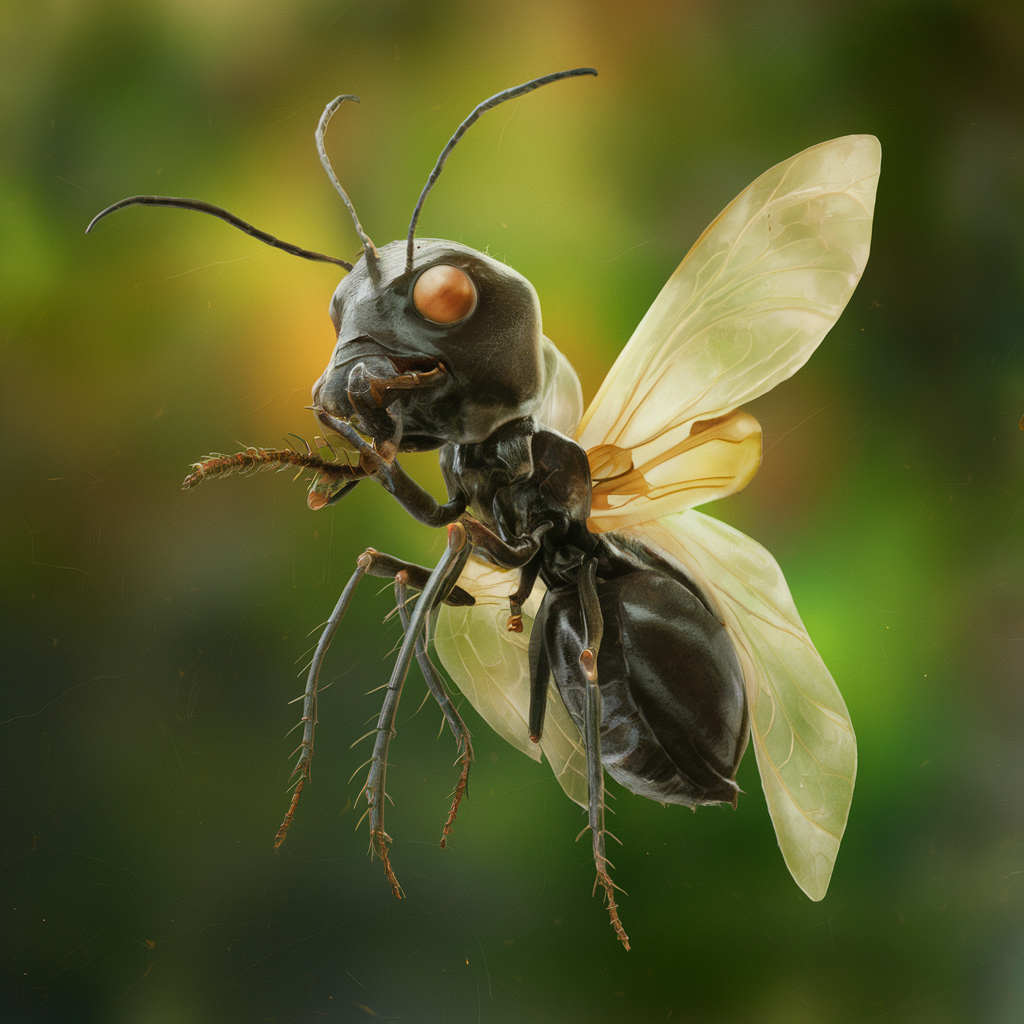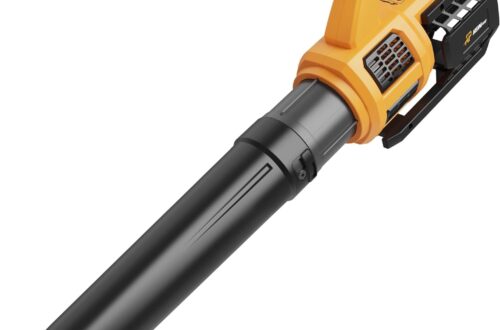If you’ve ever noticed small winged insects in or around your home, you might have immediately thought they were termites. However, several bugs look like flying termites but are entirely different species. This guide will help you identify these bugs and understand their differences from termites. In this article, we’ll cover flying ants, carpenter ants, powderpost beetles, acrobat ants, and mayflies.
- The Case of the Mistaken Identity: Flying Termites vs. Look-Alike Termites
- Carpenter Ants
- Powderpost Beetles
- Acrobat Ants
- Mayflies

The Case of the Mistaken Identity: Flying Termites vs. Look-Alike Termites(Bugs)
Termites are soft-bodied insects that feed on wood, causing significant structural damage to homes. Swarmers, the reproductive caste of termites, emerge briefly from established colonies to mate and establish new ones. These winged termites are typically light brown or black with straight antennae, a segmented body, and four wings of equal length that are either longer than or equal to their body size.
Beware the Look-Alikes
Flying Ants:
These winged warriors from the ant colony can be a real source of confusion. Both flying termites and flying ants have straight antennae and similar body shapes. However, key differences exist. Flying ants have a pinched waist, while termites lack this defining feature. Additionally, flying ant wings are often unequal in size, with the front pair noticeably larger than the back pair.
Carpenter Ants : The Wood Destroyers
Carpenter ants are large ants known for their habit of nesting inside wood. Unlike termites, they do not eat wood but excavate it to create their nests.
Differences Between Carpenter Ants and Termites
Feeding Habits : Termites consume wood as they digest cellulose. Carpenter ants, however, only hollow out the wood for nesting
Damage Pattern :
Carpenter ant damage is usually clean and smooth, resembling sandpaper, while termite damage often has a more layered and rough appearance due to their eating habits.
Signs of Carpenter Ant Infestation
You might notice sawdust-like material near wooden structures, rustling noises inside walls, or witness the ants themselves during their active hours.
Powderpost Beetles : The Silent Invaders
These wood-boring beetles can resemble flying termites at first glance. However, powderpost beetles have a characteristic hard, rounded body and short, club-like antennae, unlike the segmented body and straight antennae of termites. Their wings also differ; powderpost beetles have hard, protective forewings that cover their membranous hindwings used for flight.
Differences Between Powderpost Beetles and Termit
Appearance : Powderpost beetles are smaller and more cylindrical, whereas termites have a more uniform, soft body.
Damage : The powdery residue left by powderpost beetles is a key indicator, as termites leave behind more extensive structural damage with mud tubes.
Identifying Infestations
Look for small, round exit holes in wood, fine sawdust beneath wooden items, and reduced structural integrity in infested wood.
Acrobat Ants : The Agile Threat
These agile ants get their name from their ability to bend their abdomen in a defensive posture. While they share a similar size and colour to termites, acrobat ants can be distinguished by their distinctive “humpbacked” appearance and elbowed antennae.
Differences Between Acrobat Ants and Termites
Behaviour : Acrobat ants are more aggressive and defensive, raising their abdomen as a threat display, which termites do not do.
Nesting Habits : Acrobat ants often nest in moisture-damaged wood, much like termites, but their colonies are usually smaller.
Signs of Acrobat Ant Infestation
You may notice small trails leading to and from moist or damaged wood, as well as small piles of debris and visible ants in and around your home.
Mayflies : The Harmless Look-Alikes
These short-lived insects often emerge in large swarms, particularly near water sources. Mayflies have two sets of transparent wings, unlike the four wings of flying termites. Their delicate bodies and large eyes further differentiate them from termites.
Differences Between Mayflies and Termites
Lifespan : Mayflies live for a very short period as adults, usually just a few days, whereas termites can live for years.
Habitat : Mayflies are typically found near water sources, unlike termites which are found in wood.
Identifying Mayfly Infestations
Mayflies do not cause damage to structures and are usually found in large numbers near lights or water sources during their brief adult phase.
Proper Storage : Store firewood away from the house and elevated off the ground to prevent termite and ant infestations.
Sealing Entry Points : Seal cracks and crevices in your home’s foundation, walls, and windows to prevent entry.
Professional Pest Control
If you suspect an infestation of any of these bugs, it is best to contact a professional pest control service. They can accurately identify the pest and recommend appropriate treatment options.
Conclusion
While bugs that look like flying termites can cause concern, understanding the differences between these insects can help you take appropriate action. Whether dealing with flying ants, carpenter ants, powderpost beetles, acrobat ants, or mayflies, knowing the signs and preventive measures will help protect your home from potential damage.
By staying vigilant and informed, you can ensure your home remains pest-free and structurally sound. If in doubt, always consult with a professional to correctly identify and address any pest issues you may encounter.






